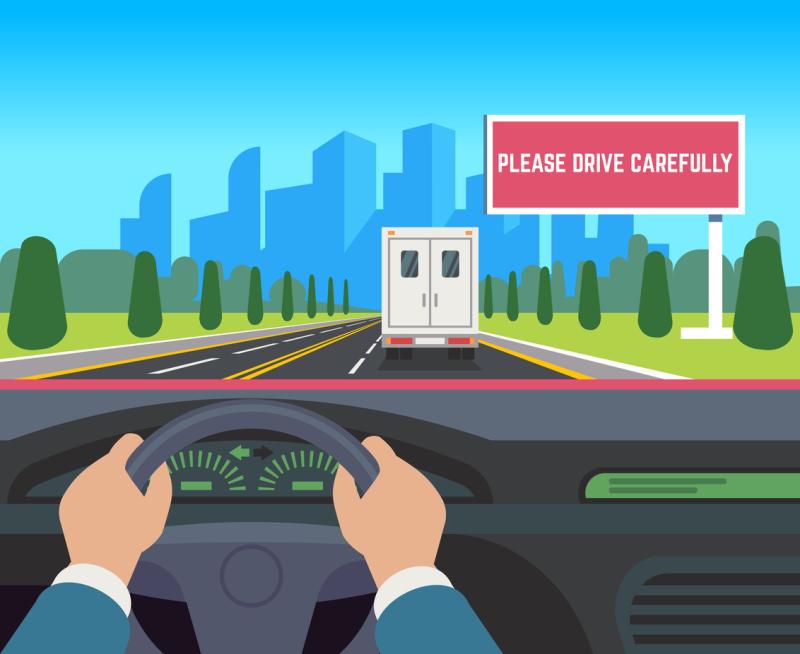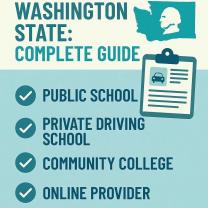What is a defensive driving program?
A defensive driving program is a specialized course designed to teach drivers advanced skills and techniques that go beyond the basics of standard driving education. The primary goal of defensive driving is to help drivers anticipate and respond to potential hazards on the road, ultimately reducing the risk of accidents and improving overall road safety. These programs are often taken voluntarily by individuals seeking to enhance their driving skills or as a requirement for traffic ticket dismissal or insurance premium discounts.
Key features of a defensive driving program include:
Collision Prevention Techniques:
- Instruction on techniques to avoid collisions and reduce the likelihood of being involved in accidents.
Risk Awareness:
- Developing awareness of potential hazards and learning how to assess and manage risks while driving.
Safe Driving Strategies:
- Strategies for maintaining safe following distances, managing speed, and making safe lane changes.
Traffic Laws and Regulations:
- Reviewing and reinforcing knowledge of traffic laws, rules, and regulations.
Driver Attitude and Behavior:
- Focusing on the importance of maintaining a positive and responsible attitude while driving and avoiding aggressive or distracted behaviors.
Alcohol and Drug Awareness:
- Educating drivers on the risks and consequences of driving under the influence of alcohol or drugs.
Weather and Road Conditions:
- Providing guidance on how to adapt driving behavior to different weather and road conditions.
Emergency Maneuvers:
- Teaching emergency braking techniques, swerving, and other maneuvers to respond to sudden and unexpected situations.
Sharing the Road:
- Promoting awareness of other road users, including pedestrians, cyclists, and motorcyclists.
Fatigue Management:
- Educating drivers on the dangers of driving while fatigued and providing strategies to stay alert on the road.
Technology and Driving:
- Addressing the impact of technology on driving, including the dangers of distracted driving and the responsible use of in-car technology.
Traffic Violation Point Reduction:
- In some cases, completing a defensive driving program may lead to a reduction in traffic violation points on a driver's record.
Defensive driving programs can be delivered in various formats, including in-person classes, online courses, or a combination of both. Many states offer approved defensive driving courses that, when completed, may result in benefits such as the removal of points from a driving record, insurance premium discounts, or even dismissal of certain traffic citations.
Individuals interested in taking a defensive driving course should check with their state's Department of Motor Vehicles (DMV) or equivalent agency to find approved programs and understand the specific benefits offered in their location.
What is the purpose and content of a defensive driving program?
Purpose and Content of a Defensive Driving Program
Purpose:
Defensive driving programs aim to improve drivers' awareness, knowledge, and skills to enable them to make safe and responsible decisions on the road. By promoting defensive driving behaviors, these programs strive to:
- Reduce traffic accidents and fatalities.
- Improve highway safety and traffic flow.
- Lower insurance costs associated with accidents.
- Increase driver confidence and self-awareness.
- Promote safe driving habits and attitudes.
Content:
Defensive driving programs typically cover a range of topics, including:
1. Traffic Laws and Regulations:
- Understanding and applying relevant traffic laws and road signs.
- Staying updated on recent changes and updates to regulations.
2. Risk Recognition and Avoidance:
- Identifying potential hazards on the road, such as weather conditions, road hazards, and other drivers' behavior.
- Learning to anticipate and avoid risky situations.
3. Defensive Driving Techniques:
- Developing safe driving habits, including proper following distance, speed control, and lane discipline.
- Practicing techniques for handling emergencies, such as skids and sudden stops.
4. Hazard Perception and Decision-Making:
- Improving ability to recognize and interpret potential hazards quickly and accurately.
- Developing effective decision-making skills in critical situations.
5. Vehicle Maintenance and Safety:
- Understanding basic car maintenance and safety checks to ensure vehicle functionality.
- Recognizing signs of potential mechanical problems and taking necessary action.
6. Responsible Driving Attitudes:
- Cultivating a positive and responsible attitude towards driving, emphasizing courtesy and respect for other road users.
- Avoiding distractions while driving and focusing on the road environment.
7. Alcohol and Drug Awareness:
- Understanding the dangers of driving under the influence of alcohol or drugs.
- Promoting responsible choices and emphasizing the importance of alcohol-free driving.
Delivery Methods:
Defensive driving programs are offered in various formats, including:
- Classroom courses: Traditional instructor-led sessions with interactive lectures and group discussions.
- Online courses: Self-paced online modules with multimedia content and interactive exercises.
- Blended courses: Combining online learning modules with classroom sessions.
Additional Resources:
- National Highway Traffic Safety Administration (NHTSA): https://www.nhtsa.gov/
- National Safety Council Defensive Driving Course: https://www3.safetyserve.com/defensive-driving-course-outline/
- American Automobile Association (AAA) Defensive Driving Course: https://northeast.aaa.com/community/defensive-driving-courses/overview.html
Overall, defensive driving programs play a crucial role in promoting safe driving behaviors and reducing traffic accidents. By participating in such programs, drivers can acquire valuable knowledge, skills, and attitudes to make informed decisions and navigate the road safely.











